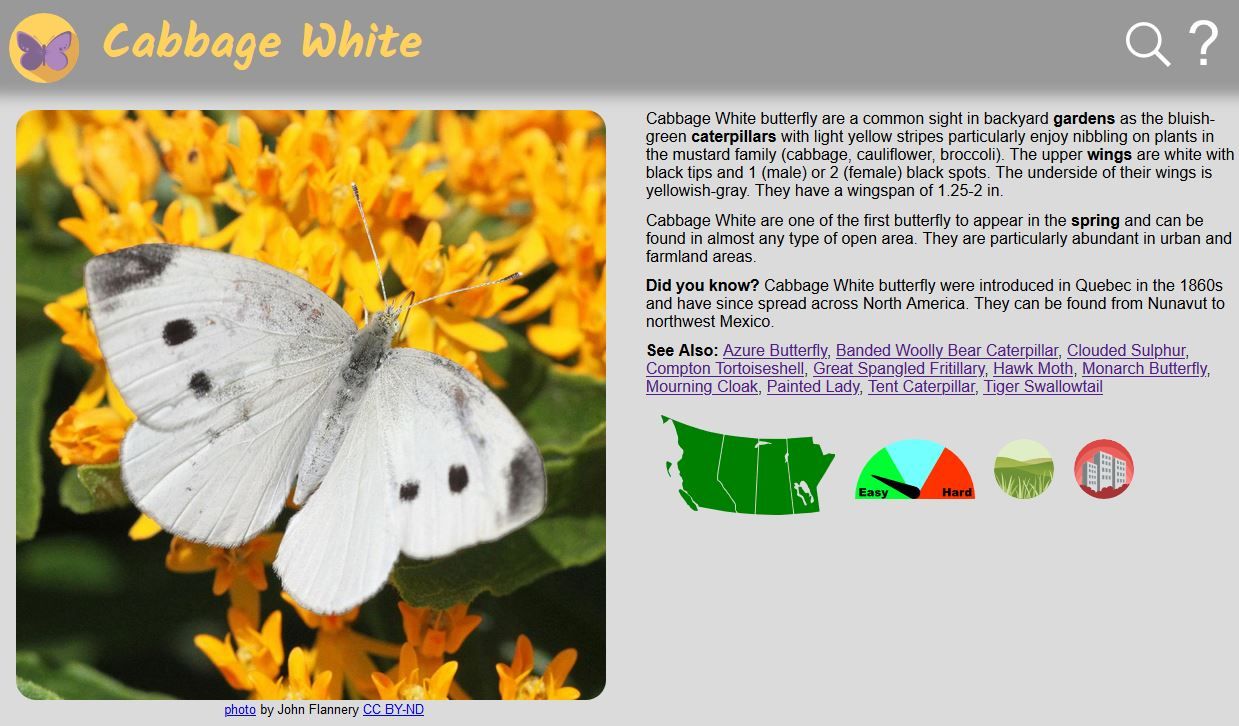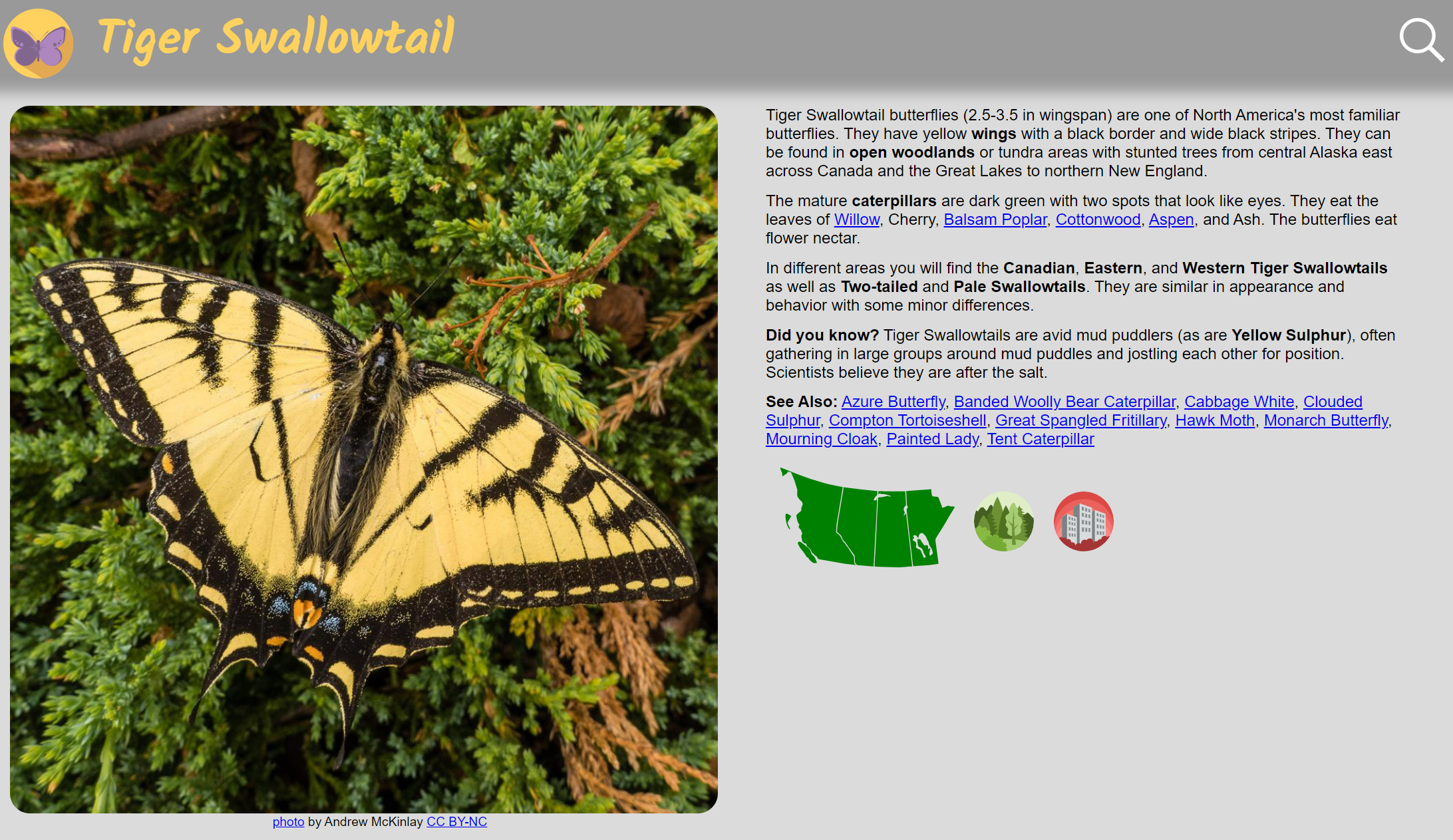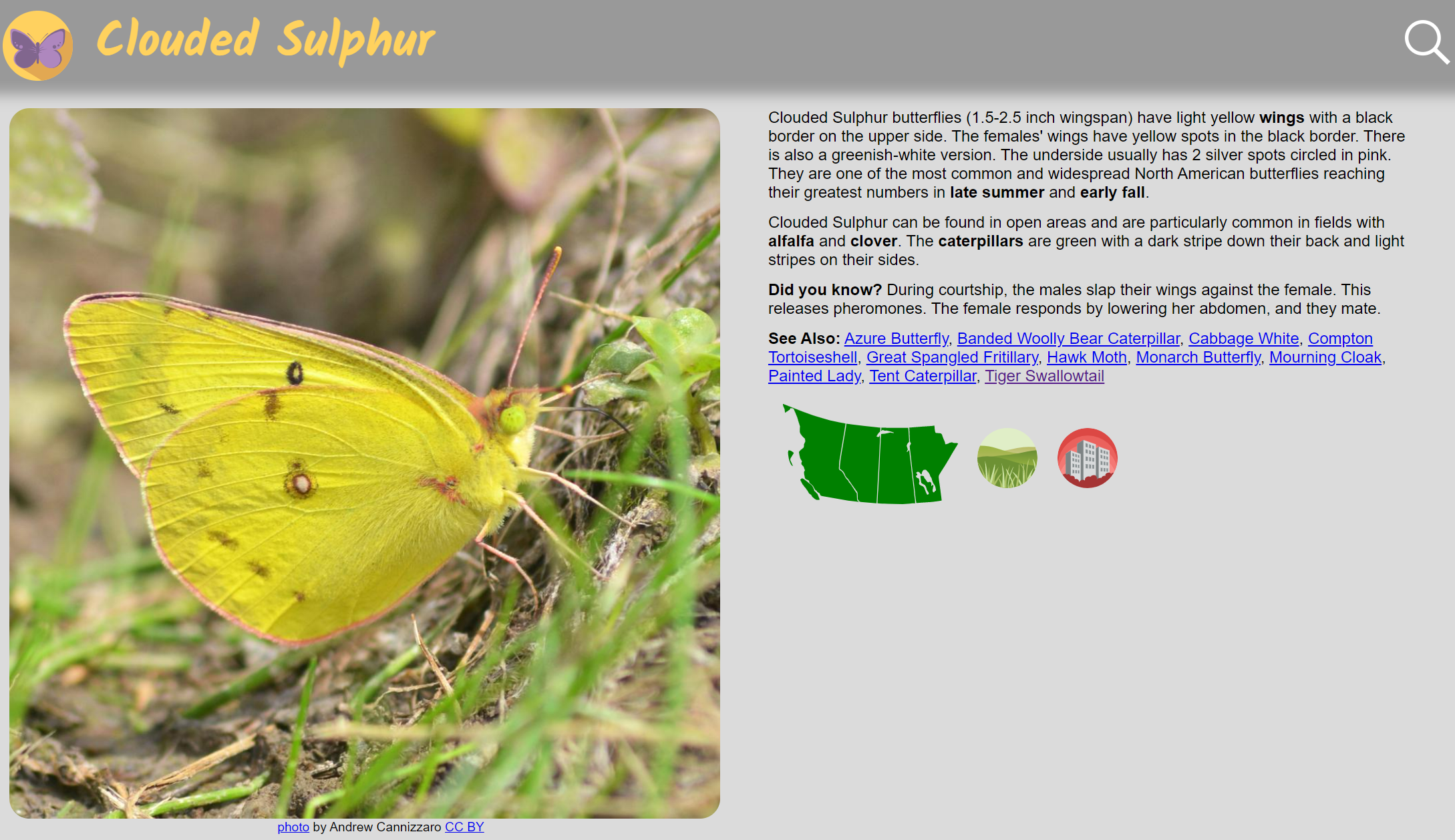Butterflies are a bright, colourful addition to our parks and gardens. Here are some of the butterflies you are most likely to spot in Western Canada as well as a look at their behaviour and habits.
Did you know? 76% of Canada’s butterflies can be found in just two provinces - Alberta and British Columbia.

Cabbage White
Cabbage White butterflies are a common sight in backyard gardens as the bluish-green caterpillars with light yellow stripes particularly enjoy nibbling on plants such as cabbage, cauliflower, and broccoli. The butterflies’ upper wings are white with black tips and 1 (male) or 2 (female) black spots. The underside of their wings is yellowish-grey. Cabbage Whites are one of the first butterflies to emerge in the spring. They were introduced in Quebec in the 1860s and have since spread across North America.
Subterfuge: Caterpillars do their best to avoid detection by birds and other predators. Once they’ve finished a feeding session, Cabbage White caterpillars move to another leaf or a different part of the same leaf. Similarly, Mourning Cloak caterpillars move away from the area where they’ve been eating before pupating to protect themselves from predators who might spot where they’ve been feeding.
Disguises: Tiger Swallowtail caterpillars are masters of disguise. In their first 3 stages, they resemble bird droppings, while the snake-like eyespots on the mature caterpillar and its ability to produce foul smells help to deter birds and other predators. Mourning Cloak butterflies tuck in their antennae and stay totally still in order to fool a potential predator into thinking they’re dead or a bark chip.

Tiger Swallowtail
Tiger Swallowtail butterflies have yellow wings with a black border and wide black stripes. Their name refers to the extension on their wings which resembles a swallow’s long tail. Tiger Swallowtails can be found in open woodlands or tundra areas with stunted trees from central Alaska east across Canada and the Great Lakes to northern New England.
Curly Straw: Butterflies use their long, thin mouthpart (proboscis) to consume liquids. When it’s not in use, they coil it up to keep it out of the way.

Clouded Sulphur
Clouded Sulphur butterflies are one of the most common and widespread North American butterflies, reaching their greatest numbers in late summer and early fall. They have light yellow wings with a black border on the upper side. The females' wings have yellow spots in the black border. The underside usually has 2 silver spots circled in pink. The caterpillars are green with a dark stripe down their back and light stripes on their sides.
Mudpuddling: Clouded Sulphur, Tiger Swallowtail, and Mourning Cloak butterflies are unable to obtain enough salt and minerals from the nectar they drink. To make up for this shortfall, large groups of males sip water from mud puddles, obtaining the minerals from the soil. They then incorporate the minerals into their sperm and pass it along to the females, improving the viability of the eggs.

Mourning Cloak
Mourning Cloak butterflies have dark reddish-brown wings with a light-brown border and a row of small blue dots on the upper surface while the lower surface is dark brown with thin wavy black lines. They can often be found among the trees along a river. The caterpillars are black with white specks and a row of red dots and several rows of black spines along their back.
Winter: Mourning Cloak and Compton Tortoiseshell overwinter as adults in tree cavities, under bark, or in unheated buildings. They die soon after the eggs are laid. Monarch and Red Admiral butterflies, on the other hand, head south for the winter.

Monarch
Monarchs are one of Canada’s largest butterflies. They have orange wings with black veins and a double row of white spots within a thick black border. The caterpillars have bright black, yellow, and white stripes.
Stay Away from Me: Monarch caterpillars store the toxins from milkweed and pass it along to the adults, making them poisonous for birds. Viceroy mimic the Monarch’s bright colours, making them less likely to be attacked by a predator.
Viceroy
Viceroy look a lot like Monarch butterflies but are much smaller and have a black line across the middle of their hindwing. The caterpillar is white and greenish-brown. Viceroy can be found across southern Canada and prefer wetlands with willow, aspen, and poplar trees.
Going the Distance: Butterflies can’t carry as much pollen as a bee, but they’re able to fly further.
See Also
Butterflies of Western Canada, Part Two
Nature Companion, a free app/website introducing many of the plants and animals found in Canada’s four western provinces
What’s the difference between a moth and a butterfly? [Live Science]
Photo credit: https://www.flickr.com/photos/apmckinlay/16397037606
EcoFriendly West informs and encourages initiatives that support Western Canada’s natural environment through its online publication and the Nature Companion website/app. Like us on Facebook, follow us on Twitter, or subscribe by email.
